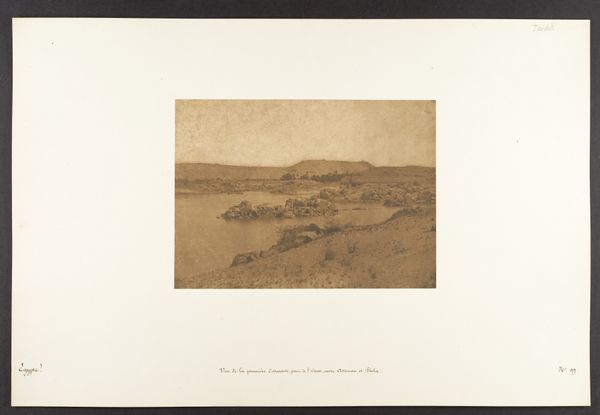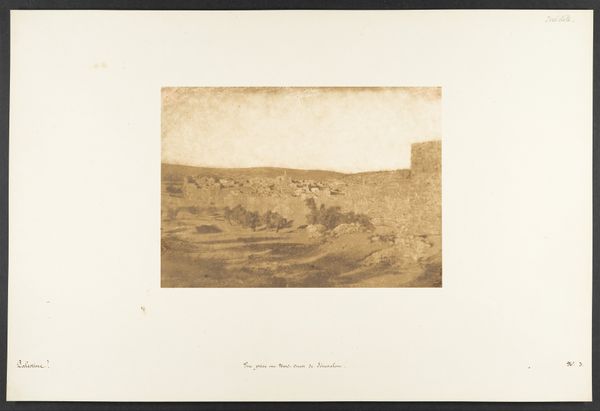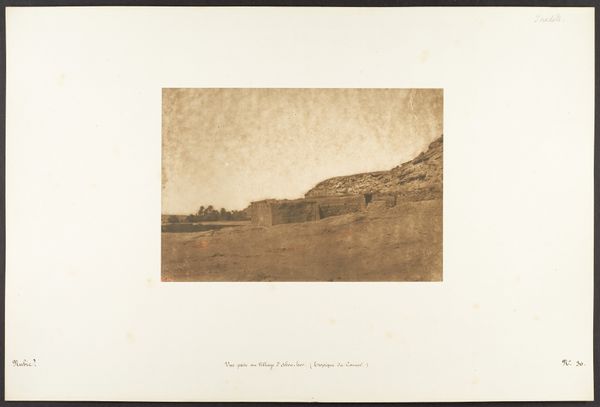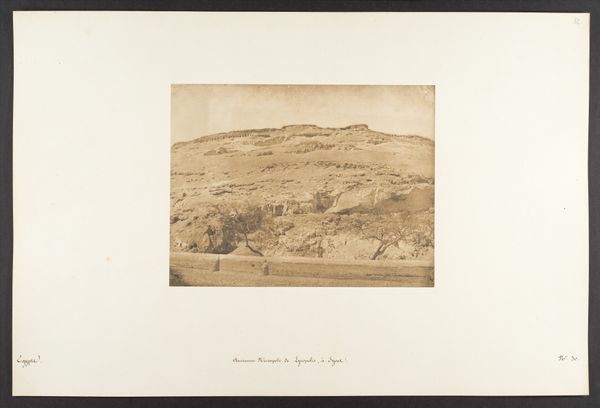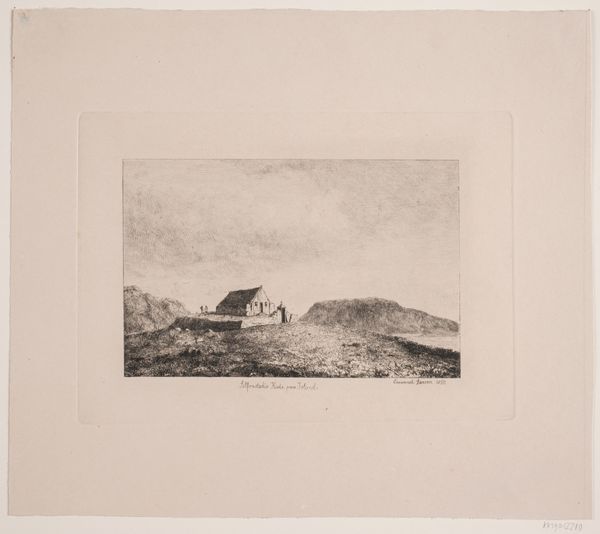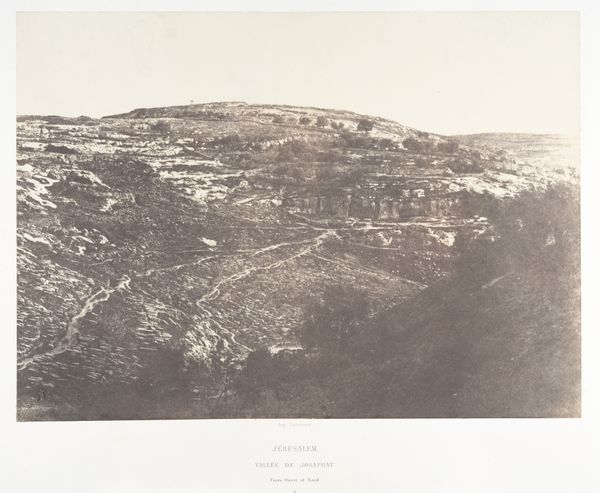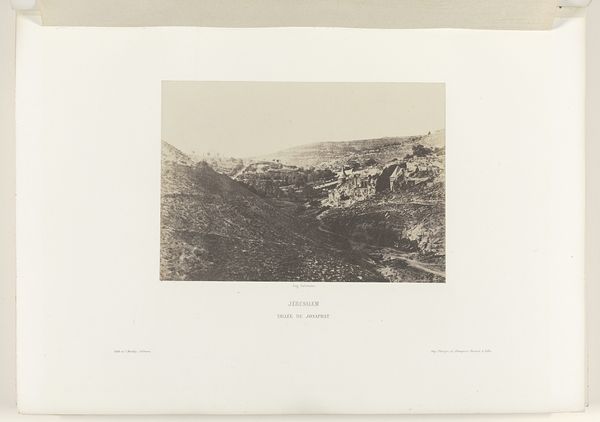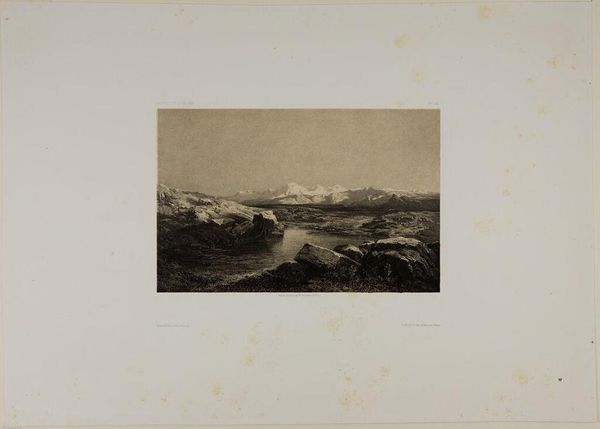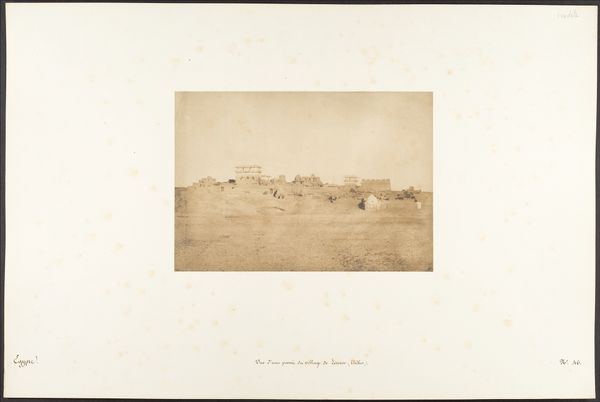
Vue générale de la Nécropole de Thèbes (Gournah) 1849 - 1850
0:00
0:00
daguerreotype, photography
#
landscape
#
daguerreotype
#
ancient-egyptian-art
#
photography
Dimensions: Mount: Approximately 32 x 47 cm (12 5/8 x 18 1/2 in.)
Copyright: Public Domain
Curator: Looking at this image, I feel transported back in time, back to a sacred space for those ancient Egyptians, so serene, full of deep meaning and connection to death as part of life, a continuous cycle. Editor: The image seems monochromatic, almost faded. It feels like a relic itself. What do we know about how it was made? Curator: This is a daguerreotype titled “Vue générale de la Nécropole de Thèbes (Gournah)” by Maxime Du Camp. It was created sometime between 1849 and 1850. A really early photographic image. The area, of course, is the Theban Necropolis near the ancient city of Thebes, known today as Luxor. Editor: A daguerreotype! So, a direct positive image on a silvered copper plate. Very material! Each plate would have been meticulously prepared and exposed. The detail is impressive considering the process. Curator: The site carries immense cultural weight. The cliffs riddled with tombs… for the Ancient Egyptians, these tombs served as vessels ensuring continuity and celebrating ancestors. This vista reveals the enduring belief in cyclical rebirth reflected in both natural landscape and burial architecture. The photo becomes a kind of talisman, resonating with an echo of the sacred. Editor: Yes, but the act of photographing—the very industrial-chemical process, the scientific eye trained on what? Laborers likely extracted stone here, building these very tombs; one culture’s holy site becomes another’s photographic object and evidence of, perhaps, a shift in power and perspective. It’s quite a complex image. Curator: I hadn't quite thought about it like that. Still, even knowing the method of its creation doesn’t diminish the image’s mystical aura to me. It still suggests a powerful connection to something beyond the mundane. Editor: Perhaps, but understanding the labour involved brings the photograph’s existence back to earth, tying it to tangible conditions and away from pure reverence. The image transforms into an index not just of what *is* seen but how and why we see it now. Curator: Thinking about what you said, this photograph isn’t just a simple landscape. It serves as a kind of bridge between the tangible and intangible, revealing how different historical and symbolic forces always interact in a single place. Editor: Precisely. It shows the inherent contradiction between artistic endeavors and underlying modes of labor. Thank you for sharing your view!
Comments
No comments
Be the first to comment and join the conversation on the ultimate creative platform.
